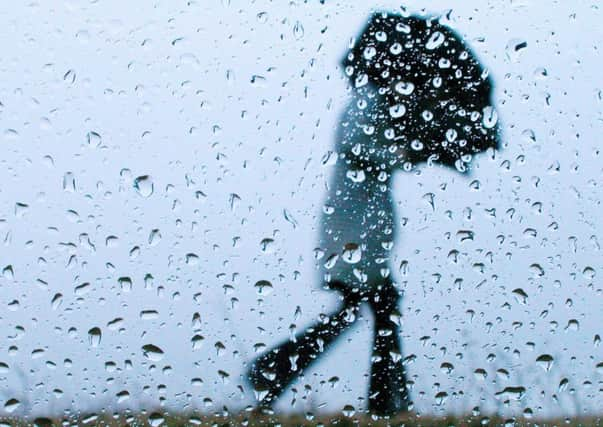Scotland ‘wetter than at anytime since 1950’


The English language is full of expressions that confirm the nation’s obsession with the weather.
But scientists have now proved that one adage is particularly true in Scotland. And, perhaps unsurprisingly, it relates to the wet stuff.
Advertisement
Hide AdAdvertisement
Hide AdResearchers at the University of Warwick and London School of Economics have been analysing weather patterns across Europe in an effort to identify and measure localised impacts of climate change.
Their findings show changes have occurred in the amount of rain falling across the continent as well as the intensity of downpours since the 1950s.
The differences were found to be most pronounced in places including Scotland, the Tuscany region of Italy, France’s Dordogne and the low countries.
They say the results, combined with the findings from an earlier related study of temperature differences by the same team, provides a new source of information to support local decisions being made in the context of climate change.
These could include implementing flood protection measures, safeguarding water supplies, agricultural planning, arranging insurance cover or even just selecting which plants will grow best in a particular area.
The study shows the total amount of winter rainfall in south-west Scotland has increased, but there is disproportionately more falling on the wettest days.
This contrasts with central Scotland, where there has been only a small identifiable increase in overall precipitation levels but what there is has shifted towards heavier downpours.
These distinct local patterns of increasingly extreme weather could prove crucial in water and land management plans, according to the report.
Advertisement
Hide AdAdvertisement
Hide AdLead researcher Sandra Chapman, from the University of Warwick, said: “We have found that in many places in Scotland the rain on heavy rainfall days has increased by over 50 per cent.
“However, in some places in the Highlands this rain has shifted from light rain days so overall it’s not much wetter but when it does rain it is more intense.
“In other Scottish locations the change reflects an increase in the total amount of rain and snow overall.
“For all these areas of Scotland the old adage ‘It never rains but it pours’ has become truer than ever.
“We have also found related results across Europe. In south-west France it is drier with less rain on all types of rainy days but in Tuscany it is drier with heavy rainfall in particular being reduced.”
Nicholas Watkins, from London School of Economics and the University of Warwick, said: “Knowing the change in average rainfall is not enough to understand the change in intense rainfall. In fact changes in variability often have a greater impact on extremes.
“The research demonstrates how rainfall variability - in particular what is known as the ‘long tail’ of rainfall distributions – makes it hard to identify changes just by looking at local observations.
“Even when we create data where changes are known to exist they can sometimes be impossible to identify because there aren’t many days in a season.
Advertisement
Hide AdAdvertisement
Hide Ad“So just looking out your window – even if you do it every day and keep a careful log – can create a misleading impression about local climate change.
“Our method quantifies this uncertainty directly from the observations. We can identify when we know things are changing, when we know things are not changing and when we know that the data cannot tell us whether things are changing or not.”
David Stainforth, from London School of Economics, said: “This work demonstrates how the impacts of climate change are complicated and local.
“As a consequence, it is likely that individuals will have different perspectives on anthropogenic climate change if their views are based mainly on personal experiences of weather rather than on the underlying fundamental science.”
He says the latest findings provide a new source of information to help inform local decision-making.